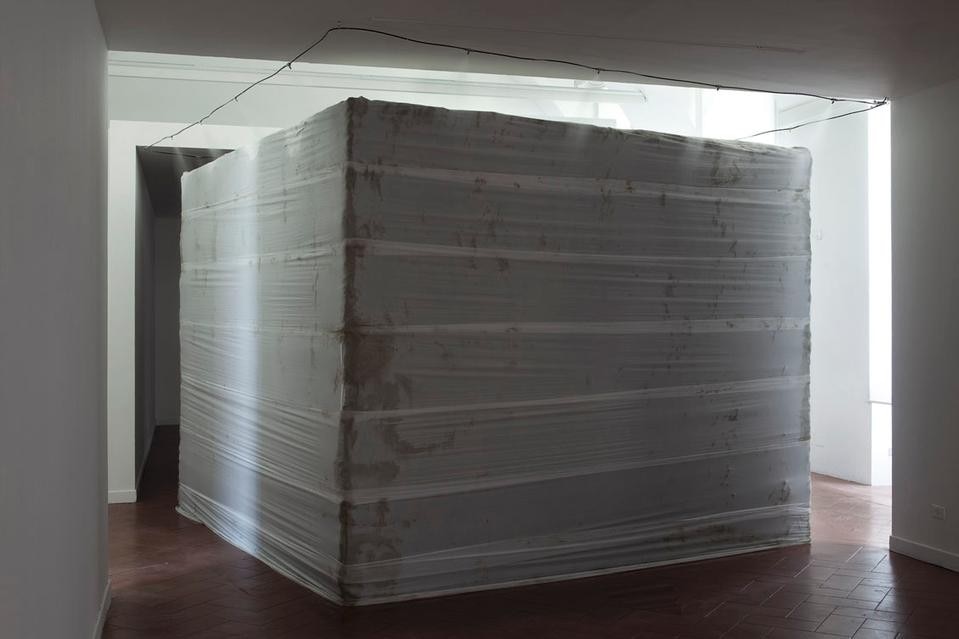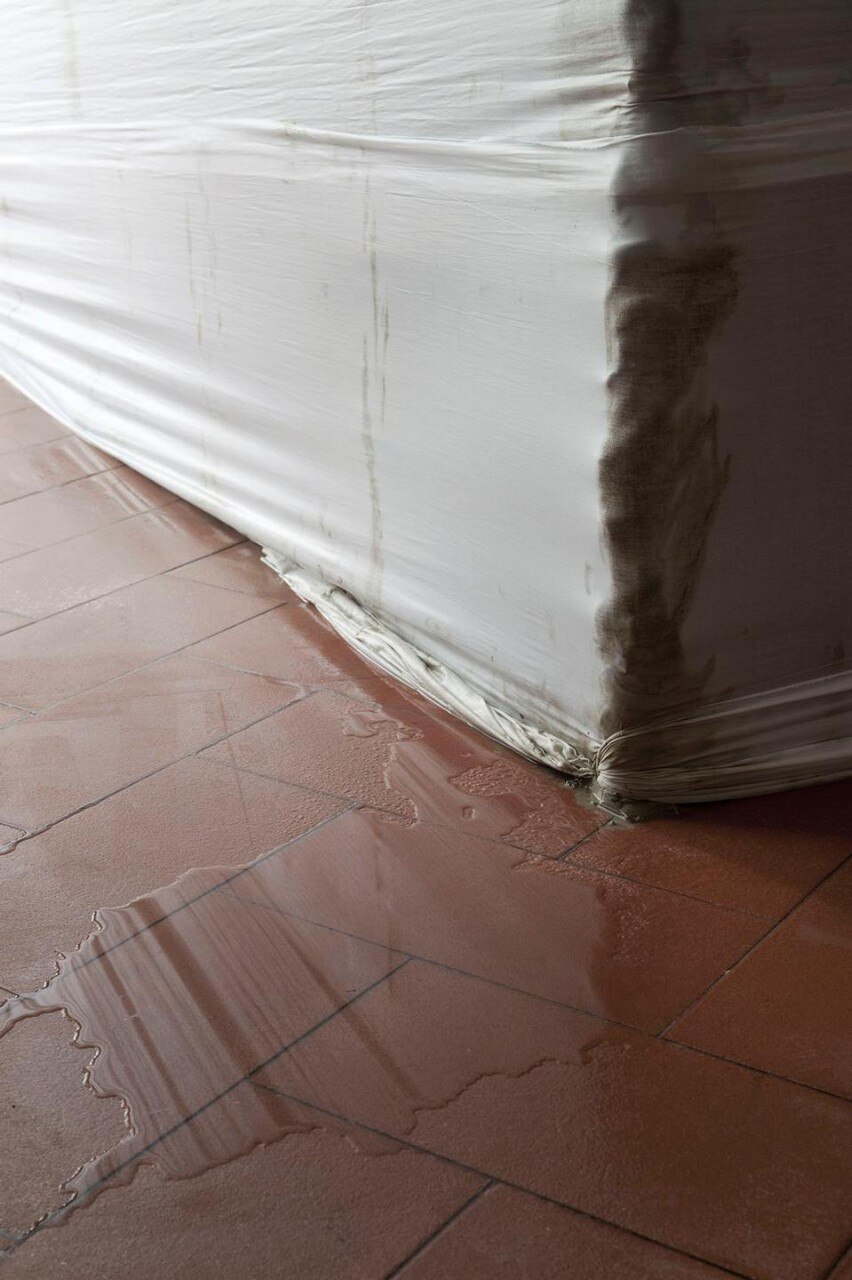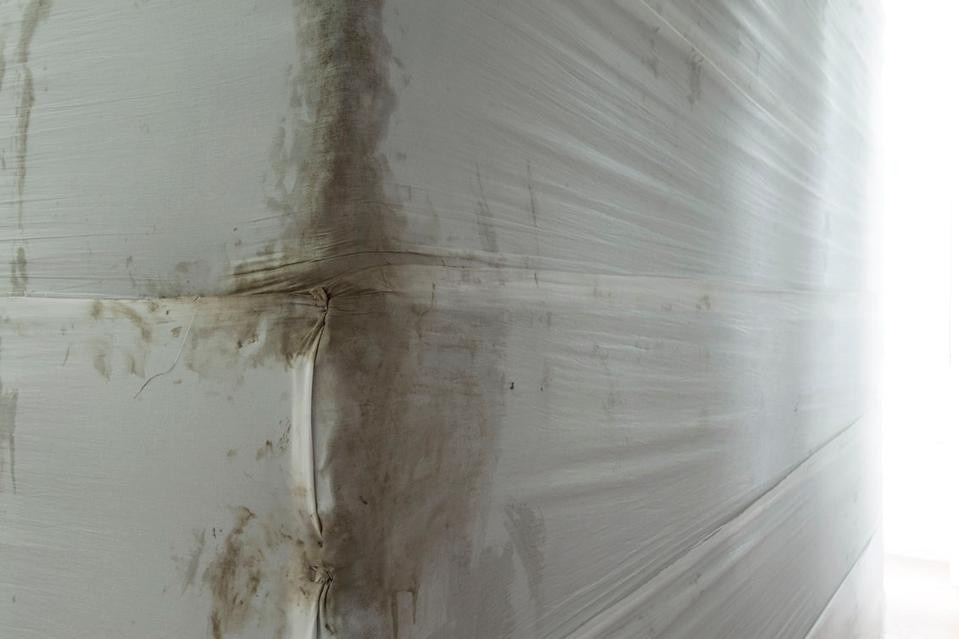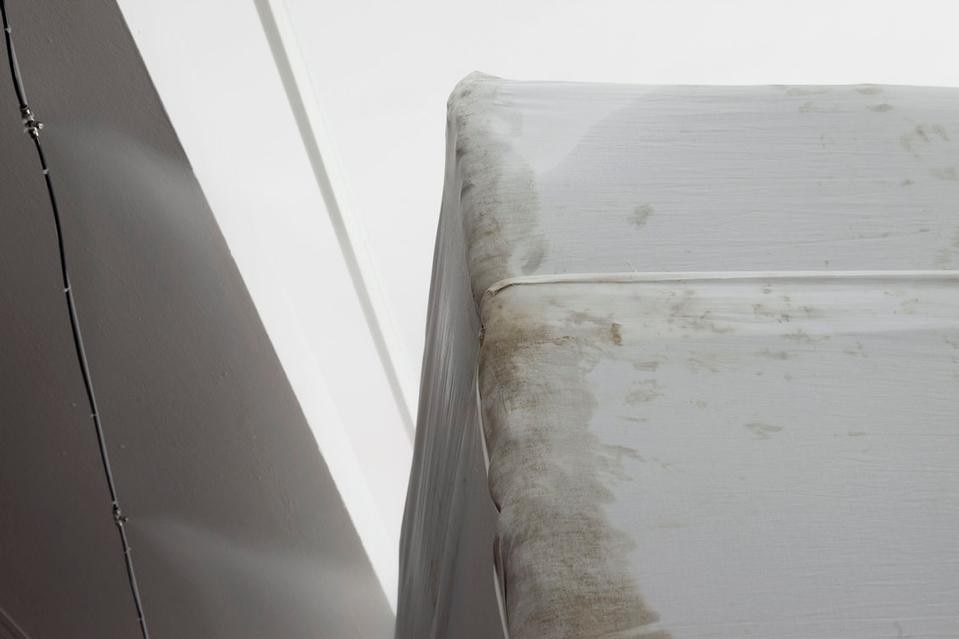The idea that led to the creation of 16th, Frévent comes from an episode he experienced in a village in France. "When the bells began to strike four o'clock," he says, "their sound literally captivated the village, as if the sound itself had become space. I had the feeling of being inside some kind of totality, a kind of ultra-awareness of space and time."
This research into the undefined nature of time is set against the undefined nature of space in the second installation: National Monument , a 'variation' of a work designed and carried out four years earlier and called National Monument , which, at the Centro Culturel Français, expresses the idea of national identity transplanted to another country. This is in response to discussions around the theme of public sculpture that Leblon had developed after receiving a public commission from a town in France.
It's the concept of public sculpture itself, and which representation should be given to such a 'solid' concept as national identity, that is brought into question, both formally and materially. The solidity and 'concrete' nature of values that are evoked by the commemorative work are superbly expressed by the form chosen for the work: a large, grey cube. It is the choice of materials that, conceptually, puts them in a state of crisis. Water and clay are set in relation to each other and held together by bandages, further enhancing the precarious nature of the whole structure. Nothing could be further from the classic, durable materials like marble and bronze usually used in these cases. "Leblon has made a intimately fragile living organism," says curator Alessandro Rabottini, "powered by a hydraulic system that needs constant maintenance. Water seeps everywhere and is therefore able to constantly question the form, modifying it, smoothing it and transforming it with a slow erosive action and the growth of mold."
The intended destabilising force deployed by Leblon does not stop at the object itself, but also affects the space. National Monument is, in fact, exactly halfway between the two rooms of the Centre's exhibition galleries, a decision that cancels the conformation and the original intended use of creating a new architecture.
The work of dismantling memory, implemented via two symbols par excellence of memory, such as the bell and the monument, has reached its climax.







